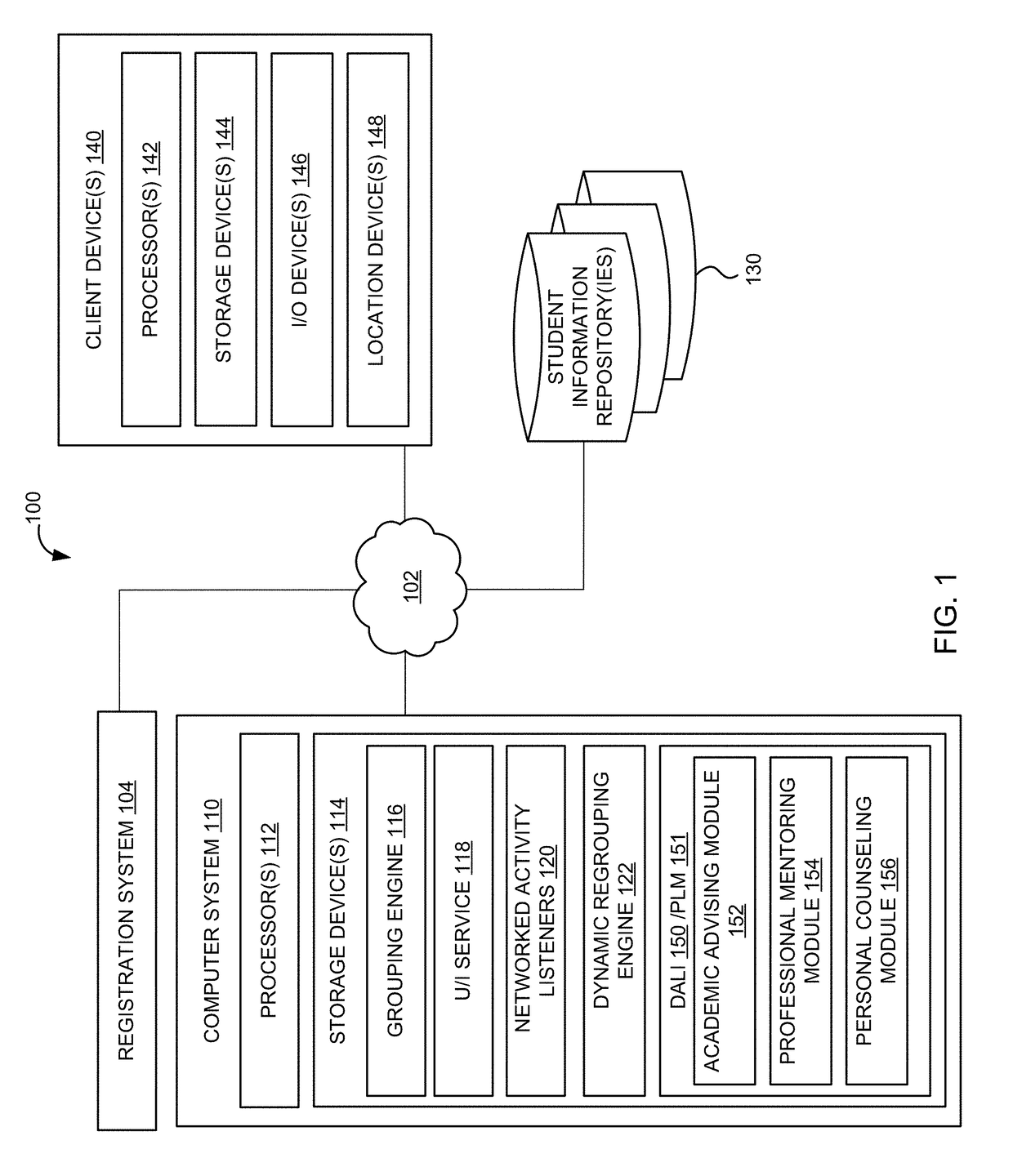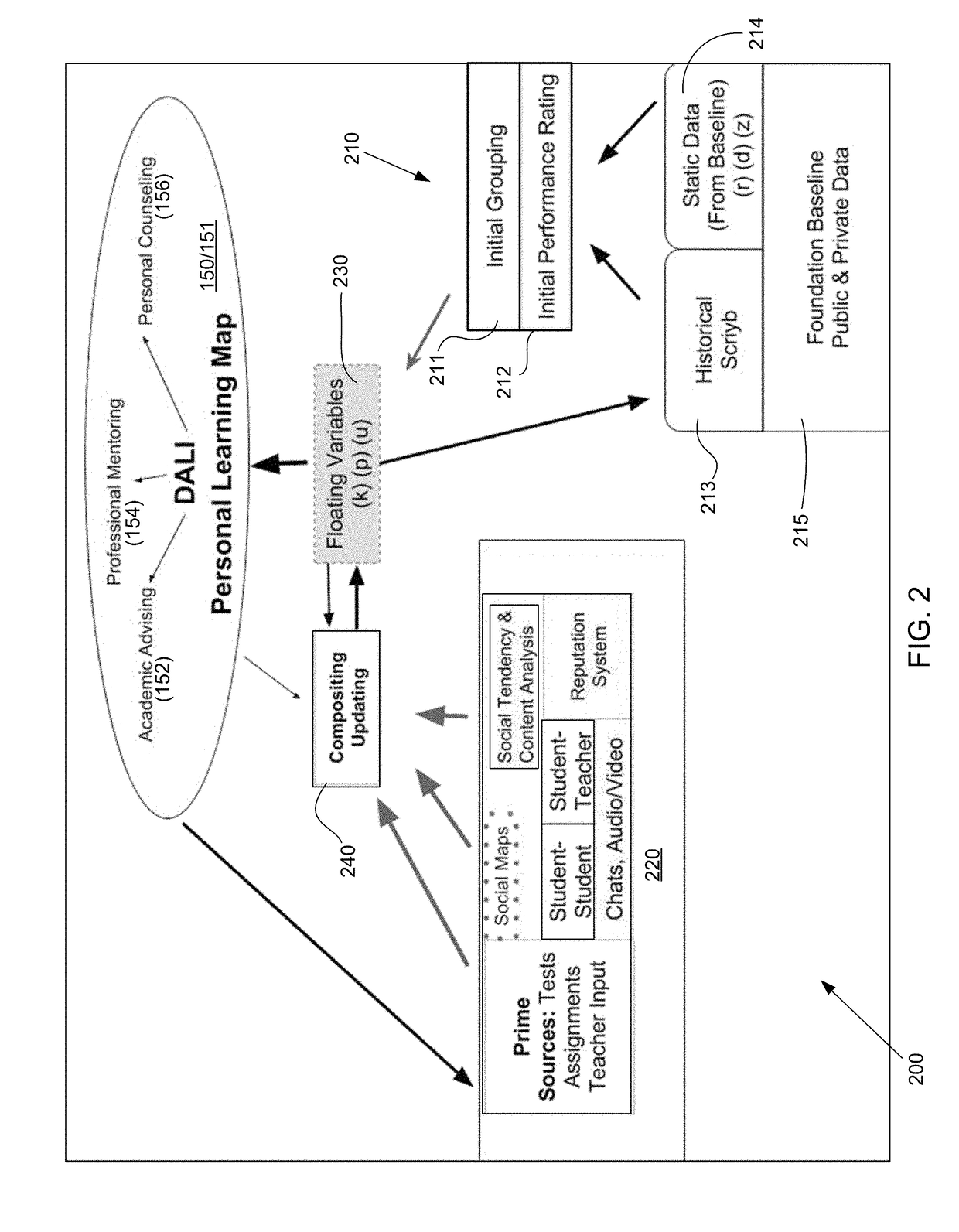Artificial cognitive declarative-based memory model to dynamically store, retrieve, and recall data derived from aggregate datasets
a declarative-based memory model and dataset technology, applied in the field of artificial cognitive declarative-based memory models to dynamically store, retrieve, and recall data derived from aggregate datasets, can solve the problems of limiting the effectiveness of such systems, less student engagement, and the appearance of lack of attention to individual students, so as to enhance the student learning environment and enhance the effectiveness of group learning
- Summary
- Abstract
- Description
- Claims
- Application Information
AI Technical Summary
Benefits of technology
Problems solved by technology
Method used
Image
Examples
Embodiment Construction
[0049]The invention described herein relates to a system and method for providing Deep Academic Learning Intelligence (DALI) for machine learning-based Student Academic Advising, Professional Mentoring, and Personal Counseling based on Massively Dynamic Group Learning academic performance history, subject-based and non-subject based communication content understanding, and social and interpersonal behavioral analysis. The DALI system includes components for monitoring and aggregating, via a network, performance information that indicates scholastic achievement and electronic communications of students participating in an online group learning course, conducted electronically via the network during a course term. The performance information may indicate a performance of a student in the course. The system may provide electronic tools to users. The system may monitor the tools to determine communication and social activity, as well as academic achievement of the students. The communic...
PUM
 Login to View More
Login to View More Abstract
Description
Claims
Application Information
 Login to View More
Login to View More - R&D
- Intellectual Property
- Life Sciences
- Materials
- Tech Scout
- Unparalleled Data Quality
- Higher Quality Content
- 60% Fewer Hallucinations
Browse by: Latest US Patents, China's latest patents, Technical Efficacy Thesaurus, Application Domain, Technology Topic, Popular Technical Reports.
© 2025 PatSnap. All rights reserved.Legal|Privacy policy|Modern Slavery Act Transparency Statement|Sitemap|About US| Contact US: help@patsnap.com



